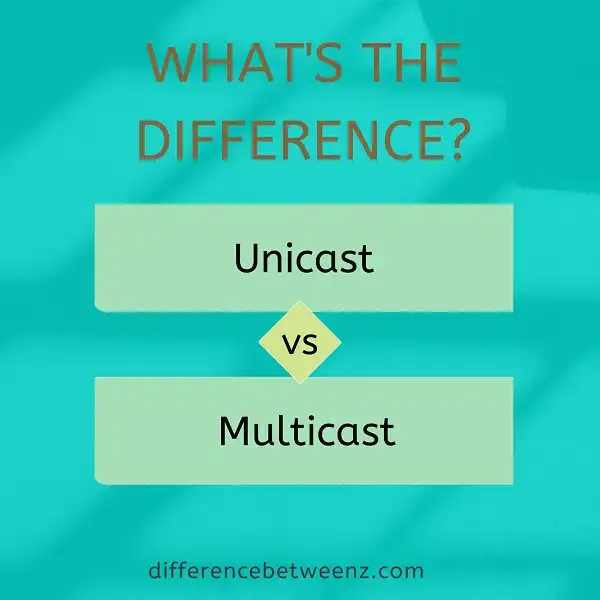Unicast and multicast are two different ways that data can be sent between devices on a computer network. While they may sound similar, there are some important distinctions between the two that you need to know before you start configuring your network. In this post, we’ll take a look at what unicast and multicast are, and when you might want to use each one. We’ll also discuss some of the benefits and drawbacks of each approach. By the end of this post, you’ll have a good understanding of the difference between unicast and multicast, and you’ll be able to choose the right approach for your needs.
What is Unicast?
Unicast is a term that is used in reference to computer networking. It describes a system in which there is a one-to-one relationship between networked devices. In other words, each device has its own dedicated connection to the network. Unicast contrast with multicast and broadcast, which describe networking models in which data is sent to multiple devices or all devices on a network, respectively. Unicast is the most common type of messaging used on the Internet today. When you visit a website, for example, your computer sends a Unicast message to the server that hosts the site. The server then sends Unicast messages back to your computer, providing the information that you requested. Unicast can also be used for streaming video and audio content, as well as for file transfers.
What is Multicast?
Multicast is a method of network communication where data is sent to a group of recipients simultaneously. Multicast is often used for streaming media and gaming applications where it is more efficient to send one stream of data to multiple recipients than it is to send individual streams to each recipient. Multicast can be contrasted with unicast, which is a one-to-one communication method, and broadcast, which is a one-to-many communication method.
Multicast uses less bandwidth than unicast and broadcast because it only sends one stream of data regardless of the number of recipients. Multicast also has the advantage of being scalable, meaning that it can accommodate a large number of recipients without significantly increasing the amount of bandwidth required. Finally, multicast can be more reliable than unicast or broadcast because it can avoid network congestion by using different routes for different streams of data.
Difference between Unicast and Multicast
Unicast and Multicast are two terms that are often used in networking. Although they may sound similar, there are actually some significant differences between the two. Unicast refers to communication between a single sender and a single receiver. In contrast, Multicast involves communication between a single sender and multiple receivers. Unicast is typically used for point-to-point communication, while Multicast is often used for Broadcast or one-to-many communication. Unicast is typically less reliable than Multicast because it requires a dedicated connection between the sender and receiver. Multicast, on the other hand, can make use of the existing infrastructure to send data to multiple receivers simultaneously. As a result, it is often more efficient than Unicast.
Conclusion
Unicast and multicast are two different transmission methods used in computer networking. The primary difference between the two is that unicast sends one copy of a packet to one destination, while multicast sends multiple copies of a packet to multiple destinations. Multicasting is often used for streaming media because it can reduce network congestion. If you’re looking to set up a network with multicasting enabled, be sure to consult your system administrator or networking specialist.


